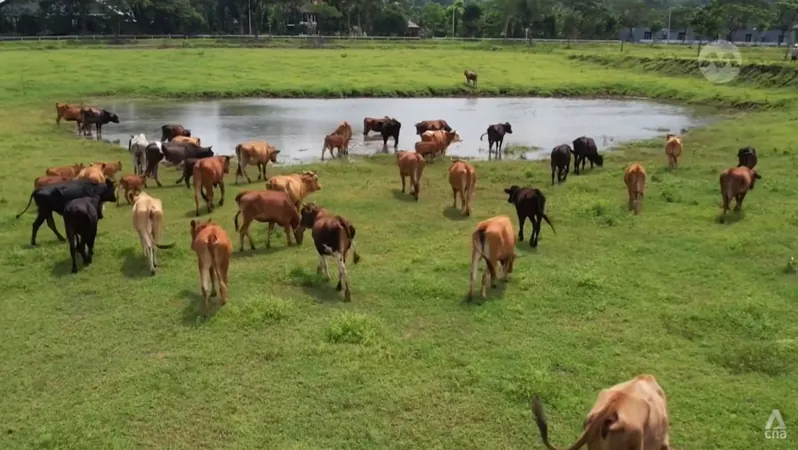
Dairy Farmers in Indonesia Alarmed by Planned Import of 2 Million Cattle by 2029
2025-04-09
Author: Li
A Volcanic Landscape Full of Challenges
At the base of Java's Mount Semeru, known for its activity yet blessed with fertile volcanic soil, dairy farmers in Lumajang face a looming crisis. As they navigate a balance between tradition and modern demands, concerns are rising about the Indonesian government's proposal to import 2 million cattle.
Local Struggles Amid High Demand
Many local farmers, like 35-year-old Gosyim Romansyah, are at a crossroads. Gosyim currently milks 10 cows, yielding around 100 liters daily, netting him approximately 12 million rupiah (about $730) each month. Although he wants to expand production, he feels tied down by the need for more grass to sustain a larger herd, which becomes scarce in the dry season. With land also sought after for palm oil and rice farming, finding space for grazing is increasingly difficult.
Escalating Milk Shortage and Import Reliance
Shockingly, over 80% of the milk consumed in Indonesia is imported. This reliance is projected to worsen as the government implements a free-meal initiative targeting over 80 million students, amplifying the need for locally produced milk. Experts estimate that domestic milk production could fall short by a staggering 8.5 million tons—enough to trigger tensions between local farmers and milk-processing corporations, many of whom prioritize cheaper imported milk.
Farmers Fight Back
The frustration of local dairy farmers came to a head last September when they protested in Central and East Java by covering themselves in milk. Their demands were clear: incentivize local production and reduce dependency on imports. In response, East Java’s governor promised to prioritize milk from local farmers before allowing imports.
Future Import Plans Unveiled
This year, the government plans to import 200,000 beef cattle and 200,000 dairy cows, with an ambitious goal of reaching 2 million by 2029 to bolster the local cattle population. Nacional Nutrition Agency head Dadan Hindayana emphasized that this plan should reduce reliance on imports and bolster local dairy farms.
New Sources and Challenges Ahead
Indonesia has recently opened the door to live cattle imports from Brazil, expanding its sourcing options beyond traditional partners like Australia and New Zealand. However, past challenges—such as securing suitable land and feed—still loom large, prompting the government to set aside over 90,000 hectares across three provinces for the cattle.
Health Concerns with Cattle Imports
While some farmers, like Misbahul Munir, welcome the importation plans, they express urgent concerns about health risks. Following a devastating outbreak of foot-and-mouth disease, which left thousands affected, farmers need assurance of veterinary support to manage health crises.
"If the focus is solely on bringing in cattle without addressing health management, it will become an unsustainable burden for us,” Misbahul noted, highlighting the need for comprehensive support.
Conclusion: A Fight for Local Dairy Farmers’ Survival
As Indonesia grapples with balancing imported and local resources, the future of its dairy farmers hangs in the balance. The hope remains that with the right measures and support, they can thrive amid the challenges posed by both competition and government policies.




 Brasil (PT)
Brasil (PT)
 Canada (EN)
Canada (EN)
 Chile (ES)
Chile (ES)
 Česko (CS)
Česko (CS)
 대한민국 (KO)
대한민국 (KO)
 España (ES)
España (ES)
 France (FR)
France (FR)
 Hong Kong (EN)
Hong Kong (EN)
 Italia (IT)
Italia (IT)
 日本 (JA)
日本 (JA)
 Magyarország (HU)
Magyarország (HU)
 Norge (NO)
Norge (NO)
 Polska (PL)
Polska (PL)
 Schweiz (DE)
Schweiz (DE)
 Singapore (EN)
Singapore (EN)
 Sverige (SV)
Sverige (SV)
 Suomi (FI)
Suomi (FI)
 Türkiye (TR)
Türkiye (TR)
 الإمارات العربية المتحدة (AR)
الإمارات العربية المتحدة (AR)